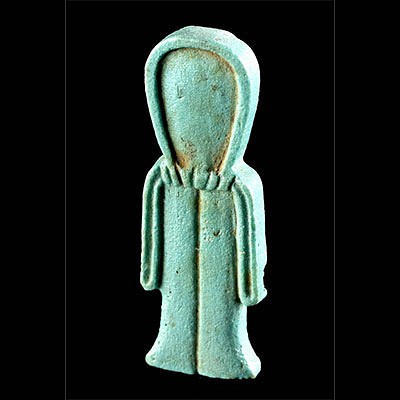13th C. Pre-Contact Inuit Walrus Ivory Sled Runner
Lot 86a
About Seller
Artemis Gallery
686 S Taylor Ave, Ste 106
Louisville, CO 80027
United States
Selling antiquities, ancient and ethnographic art online since 1993, Artemis Gallery specializes in Classical Antiquities (Egyptian, Greek, Roman, Near Eastern), Asian, Pre-Columbian, African / Tribal / Oceanographic art. Our extensive inventory includes pottery, stone, metal, wood, glass and textil...Read more
Categories
Estimate:
$1,300 - $1,950
Absentee vs Live bid
Two ways to bid:
- Leave a max absentee bid and the platform will bid on your behalf up to your maximum bid during the live auction.
- Bid live during the auction and your bids will be submitted real-time to the auctioneer.
Bid Increments
| Price | Bid Increment |
|---|---|
| $0 | $25 |
| $300 | $50 |
| $1,000 | $100 |
| $2,000 | $250 |
| $5,000 | $500 |
| $10,000 | $1,000 |
| $20,000 | $2,500 |
| $50,000 | $5,000 |
| $100,000 | $10,000 |
| $200,000 | $20,000 |
About Auction
By Artemis Gallery
Nov 4, 2021
Set Reminder
2021-11-04 10:00:00
2021-11-04 10:00:00
America/New_York
Bidsquare
Bidsquare : Ancient & Ethnographic Art Through The Ages
https://www.bidsquare.com/auctions/artemis-gallery/ancient-ethnographic-art-through-the-ages-7799
Ancient art from Egypt, Greece, Italy and the Near East, as well as Asian, Fossils, Pre-Columbian, Native American, African / Tribal / Oceanic, Fine art, and much more! All categories, all price ranges... all legally acquired and guaranteed to be as described or your money back. Artemis Gallery info@artemisgallery.com
Ancient art from Egypt, Greece, Italy and the Near East, as well as Asian, Fossils, Pre-Columbian, Native American, African / Tribal / Oceanic, Fine art, and much more! All categories, all price ranges... all legally acquired and guaranteed to be as described or your money back. Artemis Gallery info@artemisgallery.com
- Lot Description
Native American, Northwestern United States, Alaska, Inuit, Aleutian, or Punuk peoples, Pre-Contact Period, ca. 1200 to 1800 CE. A lengthy piece of walrus ivory that is carved and pierced to use as a sled runner. The section is shaped from the once rounded tusk into a faceted panel that would attach to the base of sled blades to decrease the friction between sled blade and snow - known as "qamutiik" (also qamutik, qamutiq, qamutiiq). The upper face is slightly grooved with 4 pierced holes along the length for securing with sinew cords. Runners allowed sleds to effortlessly glide across the snow and ice with the use of sled dogs. In certain surface conditions the ivory runners sometimes needed an extra coating of mud and water that would freeze into a slick ice, giving even better gliding power to the sled. This ivory runner shows extreme age, and yet is beautifully preserved with a dark brown patina. Size: 15" L x 1.5" W (38.1 cm x 3.8 cm)
This is an ESA antique exempt piece of ivory and cannot be sold internationally or to anyone residing in the states of California, Hawaii, Illinois, Nevada, New Hampshire, New Jersey, New York, Oregon, and Washington. We guarantee that the piece is over 100 years old.
Provenance: ex-Duane's Antiques, Anchorage, Alaska, USA
All items legal to buy/sell under U.S. Statute covering cultural patrimony Code 2600, CHAPTER 14, and are guaranteed to be as described or your money back.
A Certificate of Authenticity will accompany all winning bids.
PLEASE NOTE: Due to recent increases of shipments being seized by Australian & German customs (even for items with pre-UNESCO provenance), we will no longer ship most antiquities and ancient Chinese art to Australia & Germany. For categories of items that are acceptable to ship to Australia or Germany, please contact us directly or work with your local customs brokerage firm.
Display stands not described as included/custom in the item description are for photography purposes only and will not be included with the item upon shipping.
#166713Chips and splintering to peripheries and tips. Surface ossification and abrasions from age and use. Great signs of age and heavy brown patina.Condition
- Shipping Info
-
All shipping is handled in-house for your convenience. Your invoice from Artemis Gallery will include shipping calculation instructions. If in doubt, please inquire BEFORE bidding for estimated shipping costs for individual items.
-
- Buyer's Premium



 EUR
EUR CAD
CAD AUD
AUD GBP
GBP MXN
MXN HKD
HKD CNY
CNY MYR
MYR SEK
SEK SGD
SGD CHF
CHF THB
THB














